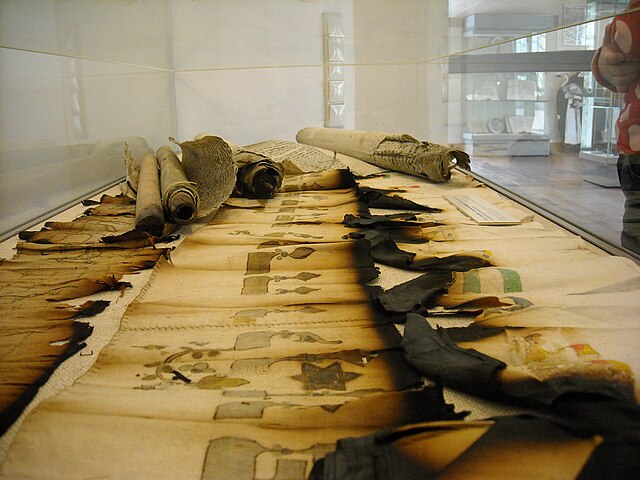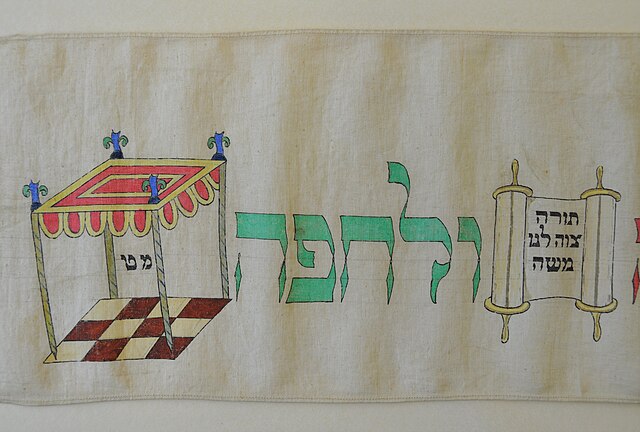A wimpel is a long, linen sash used as a binding for the Sefer Torah by Jews of Germanic (Yekke) origin. It is made from the cloth used to swaddle a baby boy at his bris milah, uniting the communal world of the synagogue with the individual's own life cycle.
On display in the Jewish Museum in Worms, Germany: Wimpels which were damaged during Kristallnacht
Wimpel painted on linen, Jewish Museum (New York)
Image: Wimpel from Lengnau, 1886
Image: Wimpel from Lengnau, 1831
A Torah scroll is a handwritten copy of the Torah, meaning the five books of Moses. The Torah scroll is mainly used in the ritual of Torah reading during Jewish prayers. At other times, it is stored in the holiest spot within a synagogue, the Torah ark, which is usually an ornate curtained-off cabinet or section of the synagogue built along the wall that most closely faces Jerusalem, the direction Jews face when praying.
A Sephardic Torah scroll rolled to the first paragraph of the Shema
An Ashkenazi Torah scroll rolled to the Decalogue
Torah cases at Knesset Eliyahoo Synagogue, Mumbai, India
A 200-year-old Yemenite Torah scroll, on gevil, from the Rambam Synagogue in Nahalat Ahim, Jerusalem. The sofer (scribe) was from the Sharabi family.








